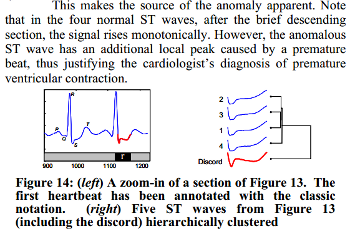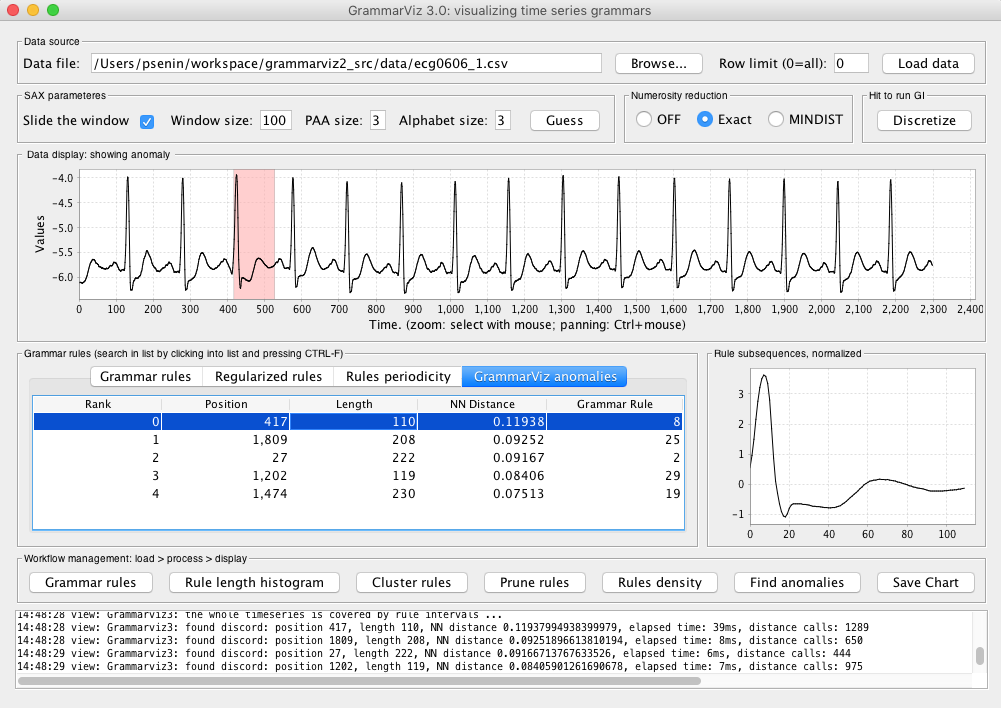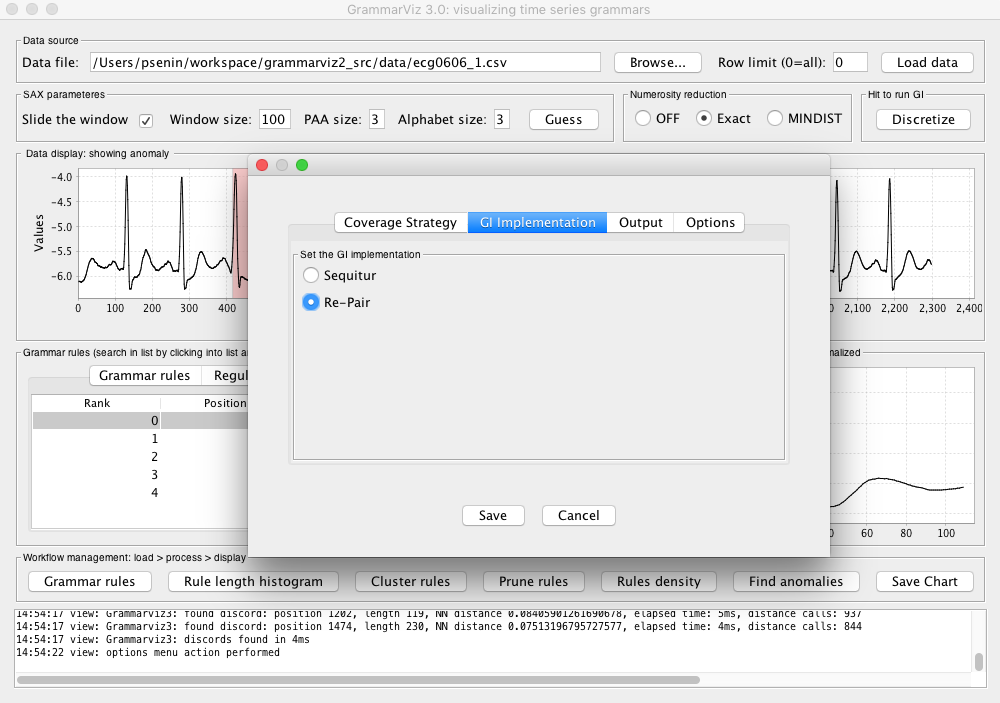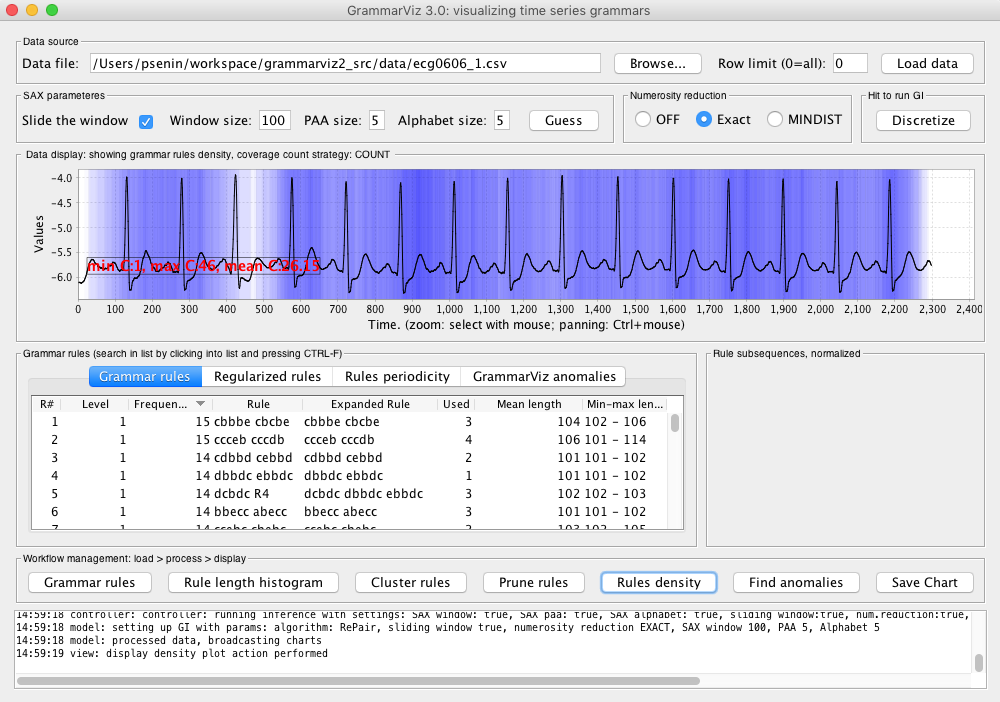Anomaly discovery with GrammarViz 3.0
1. Introduction
In this module we discuss the anomaly detection in QTDB 0606 ECG dataset. This data set (database record) can be downloaded from PHYSIONET FTP and converted into the text format by executing this command
rdsamp -r sele0606 -f 120.000 -l 60.000 -p -c | sed -n '701,3000p' >0606.csv
in the linux shell (assuming that you have rdsamp installed at your system). We use the second column of this file. This is our dataset overview:

We know, that the third heartbeat of this dataset contains the true anomaly as it was discussed in HOTSAX paper by Eamonn Keogh, Jessica Lin, and Ada Fu. Note, that the authors were specifically interested in finding anomalies which are shorter than a regular heartbeat following a suggestion given by the domain expert: “… We conferred with cardiologist, Dr. Helga Van Herle M.D., who informed us that heart irregularities can sometimes manifest themselves at scales significantly shorter than a single heartbeat….” Figure 13 of the paper further explains the nature of this true anomaly:

2. Variable length exact anomaly discovery using GrammarViz 2.0
Load the dataset using the “Load data” button, adjust SAX discretization parameters to sliding window 100, PAA 3, and alphabet 3. Click “Discretize” to infer a grammar describing the input time series. Click “Find anomalies” button to perform the anomaly discovery, then select the GrammarViz anomalies tab and choose the top ranked anomaly (#0):

this highlights the grammar rule which coincides with the true anomaly. Note that rule #8 is of length 110 while the next anomaly, the rule #25 is of length 208
3. Variable length approximate anomaly discovery using rule density curve
We use the same dataset. First, change the GI algorithm from Sequitur to RePair using GUI’s menu: click on “Settings” -> chose “GI Implementation tab” -> and toggle “Re-Pair” algorithm to be used:

Click “Save” button to update the parameters. Adjust SAX discretization parameters to sliding window 100, PAA 5, and alphabet 5. Click “Discretize” to infer a Re-Pair grammar describing the input time series. Then click on “Rules density” button:

The light blue/white color near position 480 clearly identifies the true anomaly.
4. Discussion
Note, that due to two factors: the numerosity reduction embedded in the data discretization process and the nature of GI algorithms, that create rules based on the long-range correlations, both anomaly discovery techniques shown above yield sets of rare subsequences of a variable length.